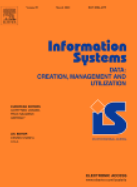Andrea Burattin
Associate Professor
Technical University of Denmark
On the declarative paradigm in hybrid business process representations: A conceptual framework and a systematic literature study
A.A. Andaloussi, A. Burattin, T. Slaats, E. Kindler, B. Weber
Abstract

Process modeling plays a central role in the development of today’s process-aware information systems both on the management level (e.g., providing input for requirements elicitation and fostering communication) and on the enactment level (providing a blue-print for process execution and enabling simulation). The literature comprises a variety of process modeling approaches proposing different modeling languages (i.e., imperative and declarative languages) and different types of process artifact support (i.e., process models, textual process descriptions, and guided simulations). However, the use of an individual modeling language or a single type of process artifact is usually not enough to provide a clear and concise understanding of the process. To overcome this limitation, a set of so-called “hybrid” approaches combining languages and artifacts have been proposed, but no common grounds have been set to define and categorize them. This work aims at providing a fundamental understanding of these hybrid approaches by defining a unified terminology, providing a conceptual framework and proposing an overarching overview to identify and analyze them. Since no common terminology has been used in the literature, we combined existing concepts and ontologies to define a “Hybrid Business Process Representation” (HBPR). Afterward, we conducted a Systematic Literature Review (SLR) to identify and investigate the characteristics of HBPRs combining imperative and declarative languages or artifacts. The SLR resulted in 30 articles which were analyzed. The results indicate the presence of two distinct research lines and show common motivations driving the emergence of HBPRs, a limited maturity of existing approaches, and diverse application domains. Moreover, the results are synthesized into a taxonomy classifying different types of representations. Finally, the outcome of the study is used to provide a research agenda delineating the directions for future work.
Paper Information and Files
In Information Systems, vol. 91 (2020).
- DOI: 10.1016/j.is.2020.101505
- BibTeX: see at DBLP
- Download text © 2020. This manuscript version is made available under the CC-BY-NC-ND 4.0 license http://creativecommons.org/licenses/by-nc-nd/4.0/.
General rights
Copyright and moral rights for the publications made accessible in the public website are retained by the authors and/or other copyright owners and it is a condition of accessing publications that users recognise and abide by the legal requirements associated with these rights.
- Users may download and print one copy of any publication from the website for the purpose of private study or research.
- You may not further distribute the material or use it for any profit-making activity or commercial gain.
If you believe that this document breaches copyright please contact us providing details, and we will remove access to the work immediately and investigate your claim.